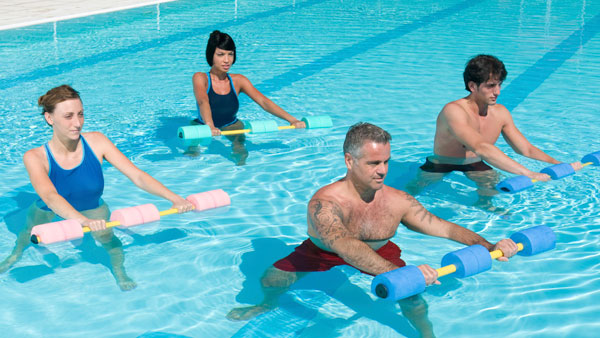Updated on June 28, 2022.
Fibromyalgia (or fibro) is a condition marked by general pain and an increased sensitivity to pain. An estimated 4 million adults in the United States experience it. Symptoms may include the following:
- Widespread pain and stiffness
- Fatigue
- Depression and anxiety
- Problems with sleep
- Difficulties with thinking, memory, or concentration
- Headaches
- Numbness or tingling in the hands and feet
- Jaw pain
- Digestive issues, including bloating and constipation
Even if you consider yourself to have a high tolerance for pain, if left untreated, fibromyalgia can severely dampen your quality of life over time. Your best bet for easing fibro pain is a multifaceted approach that you develop in close consultation with a healthcare provider (HCP). They may prescribe pain medication or non-drug approaches to easing fibromyalgia pain, including cognitive behavioral therapy and mind-body tactics such as meditation.
There are also several research-backed lifestyle approaches you can try, including the following:
Seek heat for pain
For many people with fibromyalgia, soaking in a warm tub can seem to pull pain right out of the body. Heat therapy can remove stiffness from sore muscles and joints by opening up blood vessels, allowing more blood and oxygen to get to affected areas. In turn, the increased circulation helps with relieving pain and promoting relaxation.
A 2018 review of fibro treatments published in Pain Research and Management found that one of the most effective options was applying heat. The Arthritis Foundation also recommends heat therapy for fibromyalgia patients. Warm water in particular—whether a hot shower, warm bath, or Jacuzzi—can help curb fibromyalgia pain and stiffness. For fibro pain relief on the go, keep moist hot packs at the office or in your travel bag.
Get moving
It may be counterintuitive to exercise if you have fibromyalgia since it would seem movement would lead to more pain, but there’s evidence to suggest that exercise can ease symptoms. Movements done in water may be particularly beneficial.
A 2020 study published in Modern Rheumatology reviewed 10 clinical trials that studied water exercises for fibromyalgia. The findings showed that people felt a greater reduction in their pain when doing pool-based exercises than those who did ground-based exercises or no physical activity at all. Another review published in 2019 in the Journal of Pain Research suggests that aquatic aerobic exercises may help by targeting multiple muscles in your body with little impact to joints. Doing so not only helps with pain but also makes you feel less fatigued.
If you don’t have access to a swimming pool, not to worry. Gentle land-based moves can be effective, too, without putting undue strain on joints. Try low-impact aerobic exercise like walking or other movement-based therapies like tai chi and yoga.
Consider CBD or medical marijuana
Some fibromyalgia patients find benefit in cannabidiol (CBD) products if their pain medicines prove ineffective. A 2021 survey published in The Journal of Pain found that 32 percent of people with fibromyalgia used CBD to help with pain, anxiety, and sleep. Another 30 to 40 percent reported relief across a range of symptoms.
The authors caution, however, that it’s not possible to confirm a cause-and-effect relationship between CBD use and the easing of fibromyalgia symptoms. Further research is needed to confirm such a connection. It’s also worth noting that the U.S. Food and Drug Administration doesn’t regulate the purity and safety of CBD products, so it’s important to consult with an HCP before trying any products.
Research also shows that using cannabis products (such as marijuana) may have a positive effect on fibro pain. A 2020 review published in Best Practices & Research Clinical Anaesthesiology reported on data showing evidence of cannabis helping with pain relief, the perception of pain, and improvements in sleep. More research is needed to confirm any possible benefit.
Remember that using cannabis comes with its own potential downsides, including cognitive risks and the risk of addiction. Check with an HCP before taking cannabis to weigh the potential risks and benefits. Together, you can determine whether cannabis might suit your overall health profile and fibromyalgia management plan.
Fibromyalgia is not a progressive disease, meaning it will not worsen over time. They key is to work with an HCP to find a pain management strategy that helps you control painful symptoms and maintain your everyday lifestyle as much as possible.







